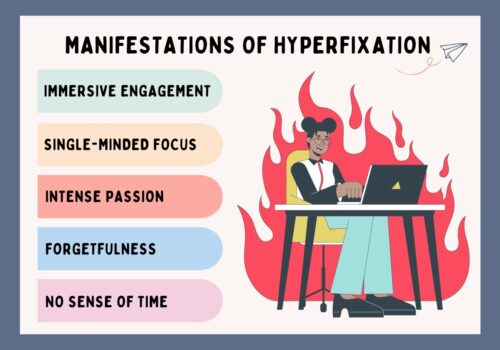Healthy habits play an essential role in determining the quality of our lives and making us feel at ease with our daily routines. Conversely, Breaking Bad Habits make us feel uneasy and can have a negative impact on both our physical and mental health. If you’re trying to improve your lifestyle, it’s essential to understand the difference between good and bad habits to start replacing your bad habits with good ones. In this article, you’ll learn more about the importance of having Healthy habits and how to break bad habits to build positive habits that will improve your life over time. Let us look at how we can get rid of bad habits.
Identify Your Problems
First, you have to determine what bad habit you’re trying to overcome. As obvious as it sounds, your first step is really just identifying what bad habit you want to break. For example, are you trying to quit smoking? Avoid losing your temper with your kids? Or maybe you want to focus more on fitness and physical activity. Once you’ve identified your bad habit, you must determine exactly what triggers that particular behavior or routine in your life. There are so many bad habits out there, so make sure you understand what you’re working on and what causes it. For example, if you want to get rid of smoking, start by learning more about nicotine addiction. Smoking is triggered by various factors that can be different for each person—stress at work, quitting time after work, or even just dealing with people who smoke. You need to identify your specific triggers before moving forward with breaking your habit. Once you know your triggers, it’s much easier to avoid them. If a coworker smokes in front of you at your desk every day long but never leaves his desk for lunch, he may be your most significant trigger for smoking during work hours!
Work On One Habit at a Time
Often, when we try to get rid of a habit that’s holding us back, it can feel like we’re trying to change everything at once. We try different tricks: setting daily reminders, getting into the zone, or thinking about how great life will be once our habit is gone. In reality, though, there’s one thing you should focus on at a time. If you want to quit smoking, your goal should be quitting smoking today—not next week or next month. It may seem counter intuitive (and if you fall off track today doesn’t mean it’s over), but starting with an actionable item can help make self-improvement manageable.
Develop Routines
While your brain likes variety, your body doesn’t. Try adopting a routine where you do something similar each day, so you don’t spend mental energy figuring out what you should be doing on any given day. Research has shown that you can make better decisions when you focus on a problem without distraction first thing in the morning after some quiet time spent thinking about it. If you follow your routine for 30 days, you can install new habits in your life.
Replace The Habit with a Different One
When you want to break a habit, you have to figure out what it is that you are replacing it with. Let’s say that a few times a week after dinner, you snuck off for an extra helping of dessert. To replace your extra dessert, why not try brushing your teeth after dinner? If you’re used to feeling stuffed from dinner and getting another serving of something sweet will leave you complete (and possibly make your stomach hurt), getting some fresh air or reading something can give you satisfaction without making you feel like running back into the kitchen. It doesn’t matter if it seems silly; as long as it helps combat your cravings, go for it!
Visualize Yourself Breaking the Habit
Take a few minutes to daydream about yourself not engaging in your habit anymore. What does that look like? What will it feel like? Visualizing daily about leaving your bad habit and replacing it with the good habit will help you achieve your goals quickly. Any new habit that creeps into your life will start first in your mind. Hence, try to visualize daily how you will overcome your bad habits.

Reward Yourself Consistently for Small Achievements
We focus on breaking these tiny goals down into manageable pieces so that it’s easier to reward yourself for achieving them. It can be easy to get disheartened when you try and change your life drastically overnight, but if you reward yourself for every minor achievement along the way, you’ll be more likely to stick with your plan. You may not lose 5 pounds overnight, but if you have a weight loss goal of losing a pound per week, after just two weeks of following your plan, you should be able to treat yourself by going out for ice cream or buying a new piece of clothing. The key is consistency! So make sure you know what goals are significant enough that they deserve celebration – then permit yourself to do so.
Don’t Be Too Hard on Yourself
It’s tempting to want to cold turkey your way out of a bad habit. But you know what? It doesn’t work. In your journey of eliminating bad habits from life takes time. So, don’t expect a drastic change in a day or a month. Don’t compare your progress with anyone else. If the habit has been part of your life for years, it will take considerable time to fight and overcome the same.
Prepare for Slipups
Another critical difference between people who succeed in changing their habits and those who don’t is how they handle slipups. Many things can derail your intentions, from a particularly stressful day at work to an unexpected child-care conflict. To counter that possibility, experts say you should do your best to prepare for them in advance by figuring out what you’ll do if or when they occur. You could even pre-commit (also known as commitment devices) by telling others about your goal—and asking them to hold you accountable for it.
Create An Environment Where You Can Succeed
There are two ways people tend to view mistakes. Some see them as opportunities for growth, while others see them as one more reason to hold back. The truth is that we’re all going to mess up—it’s a fact of life. However, what matters most is how you deal with those mistakes. Instead of turning away from failures and setbacks, take a deep breath and evaluate what went wrong. Reflect on what happened, why it happened, how you could have avoided it, or any other key points in between—then decide whether your original goal was worth striving for in the first place. If it wasn’t, move on!
Learn From Mistakes and Move On
We’d all try out a new habit for six months or so in an ideal world before declaring it broken. But that’s not always possible—life is busy, after all. If you decide your habit isn’t working for you, don’t beat yourself up about it. Forgive yourself and move on; you’ll learn from your mistake, but there’s no sense in wasting more time on something that isn’t working for you. And if your new habit is still in its infancy? That’s fine too! Give it some time to get off the ground—you may even discover a better way of doing things along the way.
These are the simple steps to overcome your bad habit. However, the key to success is consistency. If you stick to your plan, nothing on earth can stop you from achieving what you want to achieve. So, stick to your plan and achieve your goals!
















